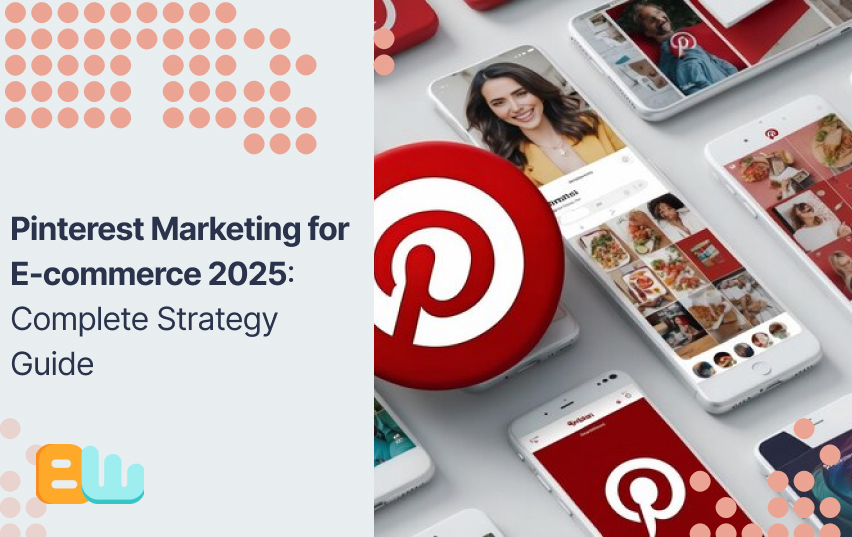
In 2025, are you prepared to use Pinterest to revolutionize your e-commerce company? Pinterest continues to present an unparalleled opportunity for e-commerce companies seeking to engage with consumers who are prepared to make a purchase, even if many brands are chasing the newest social media platforms.
People actively plan their future purchases on Pinterest, which is more than simply another social network. Additionally, by 2025, the platform will have developed into an even more potent sales channel for companies that understand how to properly use it.
I’ll cover all you need to know about Pinterest marketing for e-commerce in 2025 in this in-depth tutorial, from account setup to sophisticated tactics that will provide quantifiable outcomes.
Introduction to Pinterest Marketing in 2025
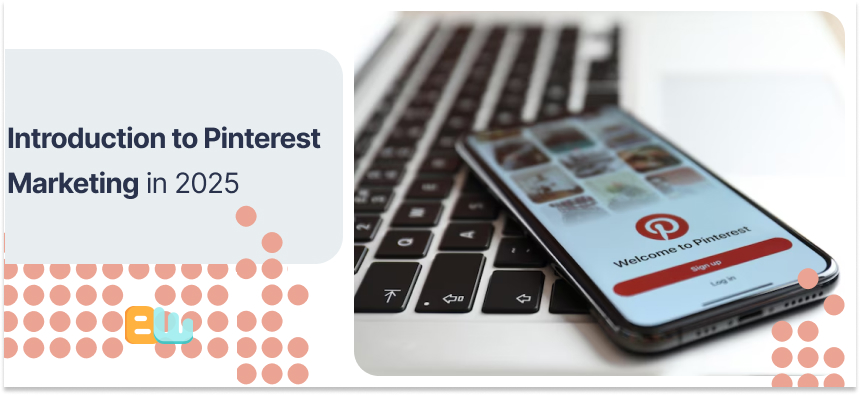
Why Pinterest Remains Valuable for E-commerce Brands
By emphasizing discovery above interaction, Pinterest has managed to hold onto its distinct place in the social media ecosystem. In contrast to social media sites where users browse through their friends’ updates, Pinterest users arrive with a purpose: they are actively seeking inspiration, ideas, and items.
This difference is important for e-commerce firms. People who use Pinterest are shopping. Before making a purchase, they are researching their possibilities, making wish lists, and planning their purchases. They are ideal targets for your e-commerce campaign since 89% of weekly Pinterest users use the site to acquire ideas for purchases.
Key Pinterest Statistics E-commerce Owners Should Know
Before diving into strategy, let’s look at the numbers that make Pinterest a must-have channel for e-commerce in 2025:
– Pinterest now has over 550 million monthly active users globally
– 85% of Pinners say they use Pinterest to plan new projects
– Pinterest shoppers spend 40% more per month than people on other platforms
– 98% of users report trying new things they discover on Pinterest
– The average order value from Pinterest traffic is $87, higher than most other social platforms
– 83% of weekly Pinners have made purchases based on content they saw from brands
How Pinterest Has Evolved Since 2023
Pinterest has changed significantly since 2023 in order to better serve businesses and consumers. The purchasing experience is now more frictionless than ever thanks to the platform’s double-down on key features.
The relevance of suggested pins has significantly increased after the introduction of improved AI-powered suggestions. This implies that firms have a higher chance of reaching really interested customers with their items.
In order to facilitate more genuine product presentations through influencer relationships, Pinterest has also increased the scope of its creator tools. More varied content formats are now supported by the platform, such as augmented reality try-on capabilities for certain product categories and immersive shopping experiences.
Understanding Pinterest’s Algorithm Changes for 2025
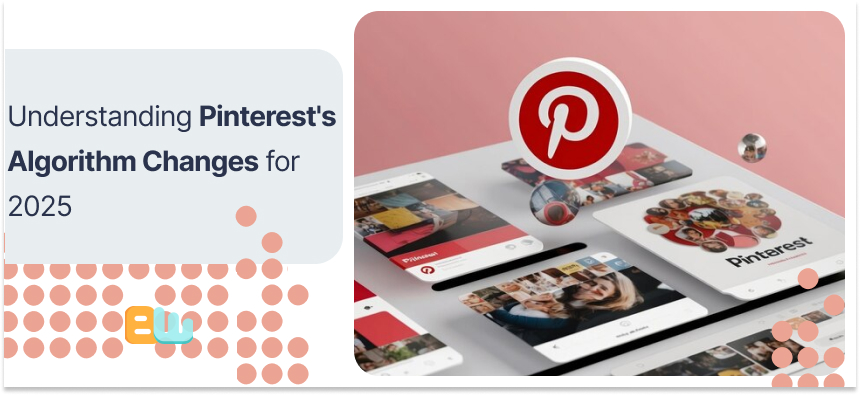
5 Critical Algorithm Updates Affecting Product Discovery
In order to give priority to user involvement and relevancy, Pinterest’s algorithm has undergone major change. The following are the top five modifications that impact the visibility of e-commerce:
1. Pinterest has improved its ability to match user search intent with pertinent products by giving preference to pins that directly address users’ search queries.
2. **Visual similarity**: Even if your keywords don’t exactly match, the system can find visually comparable products, which will help your items show up in related searches.
3. **Engagement quality**: Because they indicate greater purchase intent, quick saves followed by clicks are now given a higher weight than saves alone.
4. The algorithm now provides new pins a bigger initial boost to help them acquire momentum, even though Pinterest still prizes evergreen material.
5. **Domain quality**: The visibility of all your pins is influenced by the overall performance of your website on Pinterest. Your domain authority is increased when you have consistently high-performing pins.
How AI-Powered Pinterest Features Impact E-commerce Visibility
The AI capabilities of Pinterest have significantly improved, opening up new avenues for product discovery. More accurate product recommendations are now possible because to the platform’s usage of computer vision, which can now comprehend image information with astonishing precision.
In addition to what users have interacted with, the AI-powered shopping recommendations now take into account the visual characteristics of the products that users have expressed interest in. This implies that even in the absence of precise keyword matches, people may find your products based on style, color scheme, or design components.
Adapting Your Strategy to Pinterest’s New User Experience
Pinterest has revamped its user experience with a focus on buying and shopping. More shoppable content has been added to the home feed, and product pins now prominently display availability and pricing details.
Start by concentrating on making pins that quickly and clearly convey the value of the product. Clarity is crucial since users are making decisions about whether or not to interact with pins more quickly.
Second, make sure all of the information about your product is current and comprehensive. Pins containing precise product information, availability, and pricing are given priority on Pinterest.
Lastly, create pins that promote particular behaviors. Making pins that encourage visitors to “Shop Now” or “Learn More” can greatly boost click-through rates thanks to Pinterest’s improved call-to-action buttons.
Setting Up Your E-commerce Pinterest Business Account
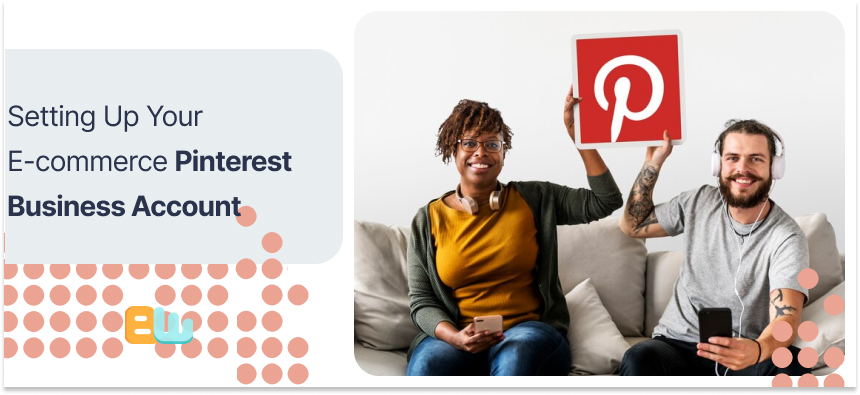
Essential Profile Optimization Techniques for Higher Conversion
The cornerstone of all your marketing initiatives is your Pinterest business profile. Your conversion rates can be greatly impacted by properly optimizing it.
Your display name and username should come first. If at all feasible, include a term that explains your product category together with your brand name. This makes your offerings instantly clear to users.
In 160 characters or fewer, your bio should succinctly convey your unique value proposition. Instead of just listing your products, concentrate on how they meet needs or satisfy desires.
In 2025, profile pictures are more important than ever. For brand identification, use your logo as your profile photo, but make sure it’s readable in tiny sizes. Your best-selling items or your brand’s look should be featured in the cover photos.
Creating High-Converting Pinterest Boards for Product Categories
Your e-commerce business can be greatly impacted by the strategic establishment of boards, which are how you arrange your Pinterest material.
Make distinct boards with keyword-rich titles that correspond to user search terms for every product category. Use “Women’s Summer Dresses 2025” rather than “Women’s Collection,” for instance, to draw in targeted search traffic.
Although frequently disregarded, board descriptions are essential for SEO. Write thorough descriptions (no more than 500 characters) that properly explain what users will find on the board and incorporate pertinent keywords.
It matters what order your boards are in. Since they will be viewed first, put your best-selling product categories and seasonal collections at the top of your page.
How to Verify Your E-commerce Website for Enhanced Trust
Website verification is non-negotiable for e-commerce businesses on Pinterest in 2025. Verified websites receive preferential treatment in search results and gain access to valuable features like enhanced analytics.
The verification process has been simplified but requires several technical steps:
1. Claim your website by adding a meta tag to your site’s HTML or uploading an HTML file to your server
2. Confirm ownership through Pinterest’s verification process
3. Set up rich pins for your products by adding appropriate metadata to your product pages
4. Connect your product catalog for shoppable pins
7 Advanced Pinterest SEO Strategies for 2025
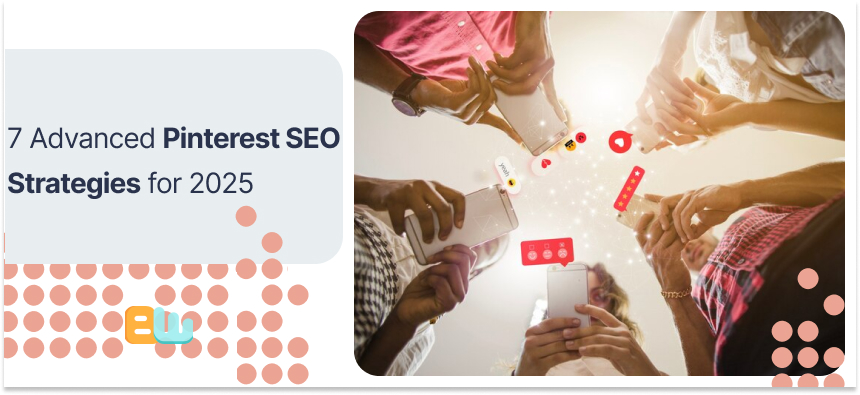
Keyword Research Techniques Specifically for Pinterest Search
Pinterest SEO differs from traditional search engines, requiring specialized keyword research approaches. The platform’s guided search provides valuable insights into what users are looking for.
Start by entering broad terms related to your products in the Pinterest search bar. The suggested keywords that appear below the search bar represent popular related searches – these are your primary keyword opportunities.
To find new trends and seasonal patterns in your field, use Pinterest Trends (pinterest.com/trends). In 2025, this technology has greatly increased in strength and now provides insights exclusive to a given industry.
Don’t ignore long-tail keywords on Pinterest. Phrases like “small apartment organization ideas for kitchen” can drive highly targeted traffic with strong purchase intent.
Optimizing Pin Descriptions with Conversion-Focused Keywords
Now that pin descriptions can contain up to 500 characters, you have plenty of room to strategically use keywords and entice viewers to click through.
Because Pinterest may truncate descriptions in some views, start your descriptions with the most crucial keywords. Particularly important are the first 30 to 60 characters.
Write descriptions that flow smoothly and contextually include keywords rather than jamming them in. Related terms and concepts are understood by Pinterest’s semantic search.
Every description should contain a clear call to action. Simple expressions like “Shop now with free shipping” or “Click to see all color options” can greatly boost conversion rates.
How to Structure Pinterest Content for Maximum Searchability
Searchability is impacted by the general organization of your Pinterest content in addition to pin optimization. Make a plan for your pins to increase their visibility.
Create content clusters centered on your primary keywords. If your business sells kitchen equipment, for instance, make a series of linked pins about “small kitchen blenders,” featuring product features, comparison guides, and recipes.
To establish topical authority, give your pins consistent names. Pinterest detects when several of your account’s pins address connected subjects.
Make thorough pin series that cover several facets of the same subject. This could include care instructions, dimensions, and styling advice for the same product line for a furniture retailer.
Creating High-Converting Pinterest Pins for E-commerce
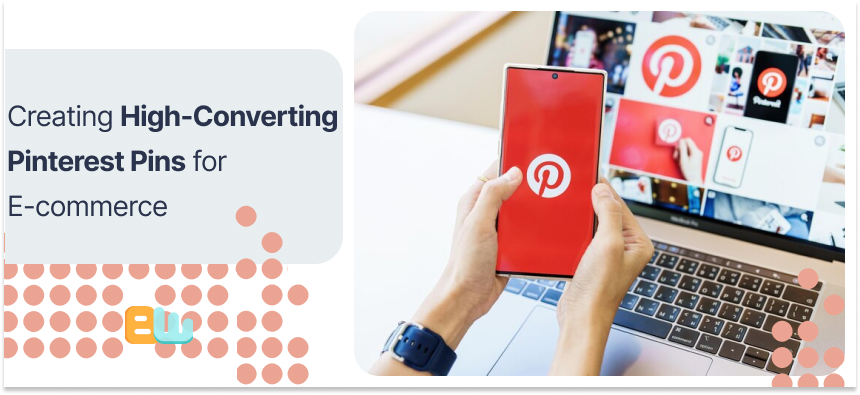
Visual Design Trends That Drive E-commerce Engagement
Because Pinterest is a visual platform, performance is greatly impacted by design trends. Several design components are proving especially useful for e-commerce in 2025:
Even yet, vertical pins function better than square or horizontal images; 2:3 (1000 x 1500 pixels) is the ideal aspect ratio. On mobile devices, where the majority of Pinterest browsing takes place, this format makes the most of the screen real estate.
Cluttered photos are losing ground to simple, minimalist designs with lots of empty space. Simple backgrounds and product-focused photography make it easier for customers to grasp what you’re selling.
Now more than ever, color psychology is important. Engagement is better for pins with color schemes that trigger particular feelings associated with your product category. Bright colors look good on low-cost things, whereas muted tones are more appropriate for premium goods.
Should You Use Video Pins or Static Images in 2025?
The debate between video and static pins has evolved in 2025, with clear use cases emerging for each format:
Video pins now generate 34% higher engagement rates for products that benefit from demonstration. Items with moving parts, multiple functions, or transformation effects (like beauty products) perform exceptionally well in video format.
Optimal video pins are 6-15 seconds long with the key message delivered in the first 3 seconds. Include captions, as 85% of Pinterest videos are watched without sound.
Static pins are still better for products where details are important, even with the rise of video. Users can examine textures, patterns, and minute details that can be overlooked in video by using high-resolution static photos.
Best Practices for Creating Shoppable Pins That Convert
Shoppable pins are now essential to the success of e-commerce on Pinterest. These pins make it easy for customers to click on products and complete purchases.
Product tags are essential for shoppable pins. Tag specific products within lifestyle images, allowing users to shop for the exact items they’re interested in without hunting for them on your website.
The price display has been refined in 2025. Because they set realistic expectations, testing reveals that pins that display pricing right on the image (as opposed to only in the information) convert 24% better.
Display different product variations using multi-image pins. By letting consumers browse color schemes or other viewpoints right within Pinterest, you may cut down on the number of times they need to visit your website before deciding to buy.
Pinterest Shopping Features Every E-commerce Must Leverage
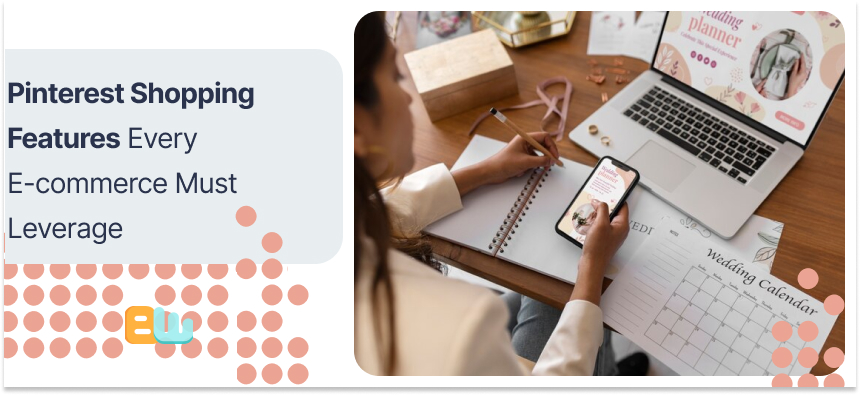
How to Set Up and Optimize Your Pinterest Product Catalog
In 2025, Pinterest’s catalog management system advanced, providing e-commerce companies with strong tools to display their goods:
Numerous formats are now supported for the catalog upload process, including direct API integrations with well-known e-commerce systems like Magento, WooCommerce, and Shopify. Product data, pricing, and inventory are automatically synchronized by these interfaces.
Price and availability are no longer the only characteristics of a product. Specific aspects, such as materials, measurements, sustainability certifications, and more, can now be included and are searchable on Pinterest.
Maximizing Sales Through Pinterest’s Checkout Features
Because Pinterest’s native checkout feature has advanced so much, customers may now finish purchases without ever leaving the app:
Connect your payment processor and set up delivery options in your Pinterest business account to set up Pinterest Checkout. The software now provides customizable shipping calculation tools and supports major payment providers.
Customize the post-purchase journey to maximize your checkout experience. Include customized thank-you notes, make product recommendations, and be explicit about delivery requirements.
Using Collections to Create Immersive Shopping Experiences
Pinterest’s solution to curated shopping is collections, which let marketers arrange similar products in well-planned displays.
Make seasonal collections for particular occasions that correspond with Pinterest’s increased search activity. In their respective seasons, the “Summer Essentials,” “Holiday Gift Guide,” and “Back to School” collections do exceptionally well.
Instead of focusing on product categories, theme your collections around lifestyle ideas. The reason “Coastal Living Room Ideas” will do better than “Sofas and Chairs” is that it can let users see a whole solution rather than just products.
Pinterest Advertising Strategies for E-commerce ROI
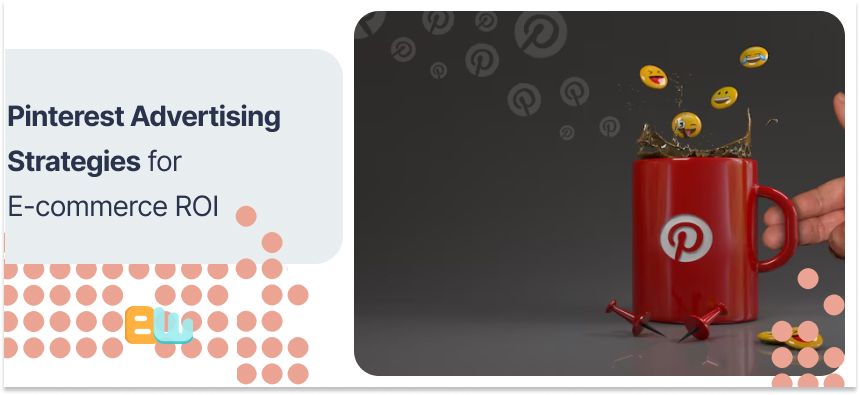
Which Pinterest Ad Formats Deliver Best E-commerce Results?
Pinterest offers several ad formats, each with specific strengths for e-commerce marketing objectives:
With an average conversion rate of 3.7% in 2025, shopping advertisements have become the most effective direct sales channel. These advertisements effortlessly integrate into natural search results and are taken straight from your product catalog.
Collection ads work exceptionally well for products typically purchased together or product lines with multiple variations. The format showcases a hero image with several related products beneath it, driving 23% higher average order values than standard shopping ads.
With completion rates 15% higher than industry averages, video advertisements continue to be the most successful for raising brand knowledge and attention. Strong top-of-funnel outcomes are produced by 6–15-second video advertisements for products that need to be explained or demonstrated.
Carousel advertisements are particularly useful for displaying product lines or narrating a visual narrative using several pictures. Carousel ads generate 34% more interaction than static pins in the fashion and home goods categories.
Sponsored idea pins, or concept advertising, are most effective when used for complicated items that benefit from a multi-step explanation. Users can swipe through a series of pictures or videos with accompanying text in these immersive, multi-page advertisements.
Budget Planning and Bid Strategies for Maximum ROAS
In 2025, Pinterest advertising has grown more competitive, necessitating careful budgetary planning and advanced bidding strategies.
A minimum test budget of $500 to $1,000 for each campaign should be started in order to collect enough data for optimization. For Pinterest’s algorithm to optimize distribution, there must be a minimum of 50 to 100 conversions.
Use dayparting techniques according to the peak hours of your intended audience. There are noticeable peaks in Pinterest traffic patterns, with the largest engagement rates usually occurring on weekday evenings (7–10 PM) and weekend mornings (9 AM–12 PM).
Targeting Options That Convert Browsers Into Buyers
Pinterest’s targeting features have greatly increased, providing e-commerce advertisers with more precise options:
Even though Pinterest currently has over 10,000 interest categories, interest targeting is still the cornerstone of successful marketing. To attract users with clear aesthetic preferences, combine general and specialized interests (for example, “Home Decor” + “Scandinavian Design”).
Intent signals have increased the effectiveness of keyword targeting. Users can now be targeted not only by their search terms but also by their interactions with the search results.
Data-Driven Pinterest Marketing: Analytics & Measurement
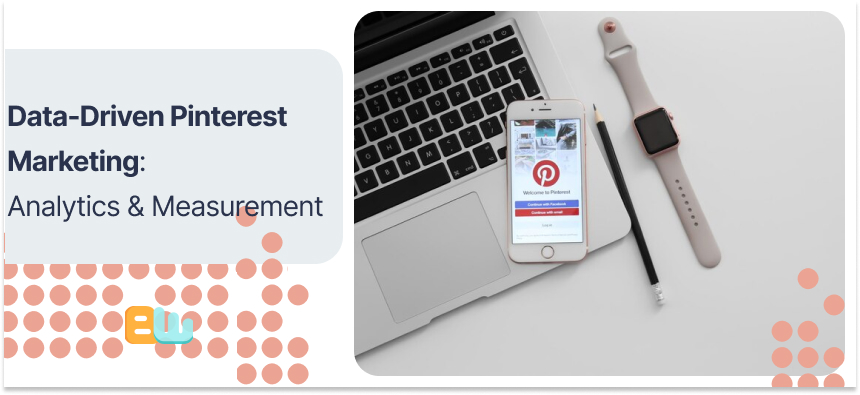
Essential Pinterest Metrics Every E-commerce Should Track
E-commerce marketers can now gain better insights into performance thanks to the significant maturity of Pinterest analytics:
Focus on the Pin-to-purchase rate (the proportion of pin clicks that turn into sales) and Pin conversion rate (the percentage of pin views that lead to clicks to your website) in addition to basic engagement metrics.
The average order value from Pinterest visitors is now a crucial indicator of the platform’s actual worth. Compared to users of other social media platforms, Pinterest users usually have order values that are 30–40% higher.
How to Use Pinterest Analytics to Optimize Your Strategy
Your plan should be directly informed by the actionable insights that Pinterest’s analytics tools offer:
Utilize Pinterest Analytics’ content performance breakdown to do routine content audits. Determine which pins are your best performers in terms of engagement, clicks, and conversions, then look for recurring themes to use in subsequent posts.
To learn about changes in your followers’ demographics and interests, use the audience insights page. Your content strategy should change to accommodate your audience’s changing tastes.
Your content calendar should be informed by the Pinterest trends tool. To optimize visibility during times of strong interest, make pins that correspond with emerging search trends 30 to 45 days before their peak.
Connecting Pinterest Data with Your E-commerce Platform
A comprehensive picture of the consumer journey can be obtained by combining Pinterest data with your more comprehensive e-commerce analytics.
To precisely monitor performance in Google Analytics, set up appropriate UTM parameters for every Pinterest visitor. To make reporting easier, use uniform campaign naming practices.
Use Pinterest’s conversion API in addition to the typical Pinterest tag to record occurrences that client-side tracking would overlook. Given the growing privacy regulations that impact cookie-based tracking, this is particularly crucial.
Integrating Pinterest with Your Omnichannel Strategy
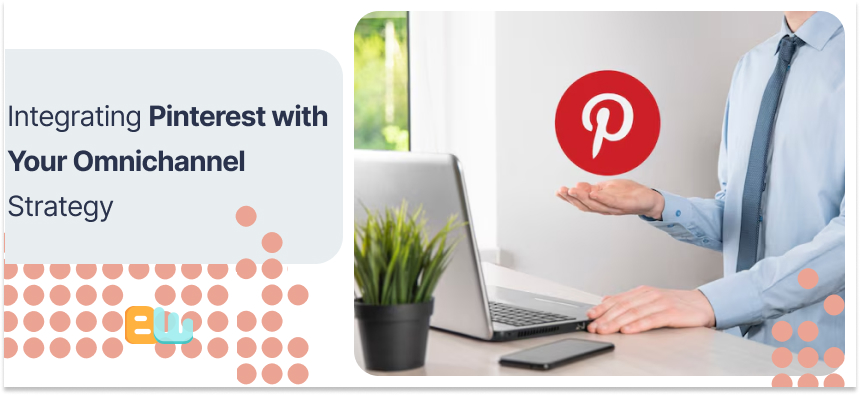
Seamless Connection Between Pinterest and Your Store
Maintaining consistency between Pinterest and your online business boosts conversion rates and improves the user experience:
Create landing pages especially for Pinterest visitors while keeping your pins’ visual coherence. Click-through users should know they’ve reached the correct page right away.
Use Pinterest’s “Shop the Look” feature on your product pages so that users may find related products on your website in a familiar experience similar to Pinterest.
How Leading Brands Create Pinterest-to-Purchase Journeys
Prominent e-commerce companies use Pinterest’s distinct advantages to create complex customer journeys:
Chart the entire customer experience, starting with the original Pinterest discovery and continuing through contemplation, purchase, and involvement after the purchase. Determine possible drop-off spots and produce content that is specially intended to advance users to the following phase.
As customers progress through the funnel, employ successive retargeting to display more detailed product information. Present offers or incentives to finish the transaction after moving on to particular product features from lifestyle and inspirational content.
Future-Proofing Your Pinterest E-commerce Strategy
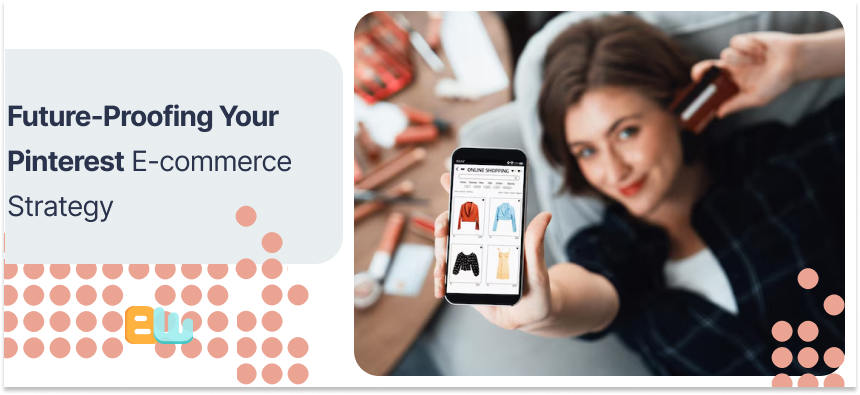
Emerging Pinterest Technologies to Watch in 2025-2026
Pinterest is always changing, and a number of new technologies could have an effect on e-commerce tactics:
In addition to cosmetic goods, augmented reality try-on capabilities are also being extended to fashion, accessories, and home décor. Conversion rates will significantly improve for brands that offer 3D product models.
Pinterest has made significant investments in computer vision technology that can recognize products from real-world photographs with astonishing accuracy, demonstrating the ongoing advancement of visual search skills. The importance of optimizing your product photos for visual search will only grow.
Voice-activated Pinterest features are becoming more popular, especially for situations where browsing is done hands-free, including crafting or cooking. Think about how customers might use voice commands instead of text to look for your products.
Building a Sustainable Pinterest Strategy for Long-Term Growth
Thinking beyond tactical campaigns is necessary for long-term success on Pinterest:
Instead of creating individual pins, create a content ecosystem. Provide logically connected information that takes users from inspiration to targeted product solutions.
Invest in content that doesn’t take time and performs well year after year. If you properly optimize and update your content on a regular basis, Pinterest content can generate traffic and sales for years, unlike other social media sites.
Conclusion: Implementing Your Pinterest E-commerce Roadmap
30-Day Action Plan for Pinterest Marketing Success
Are you prepared to change the way you market on Pinterest? This is your 30-day start-up plan:
Days 1–3: Examine your present metrics and visibility on Pinterest. Determine which content is performing well and what needs to be improved.
Days 4–7: Use descriptions with trending keywords to improve your Pinterest business profile and strategically organize your boards.
Days 8–14: Make or update a minimum of 20 shopping-optimized pins, emphasizing your top-selling products.
Days 15–21: Create and improve your product catalog, making sure that every item is described and categorized with details.
Days 22–25: Create a content plan for the upcoming three months, and consider both your company’s goals and seasonal trends.
Days 26–28: To determine whether pin format, video, or carousel works best for your products, use a testing strategy for at least two of them.
Days 29–30: Create your framework for measurement and decide on particular KPIs to monitor for the upcoming quarter.
Resources for Staying Updated on Pinterest Changes
The Pinterest platform is changing quickly. Use these essential resources to stay informed:
– For official updates and best practices, see the Pinterest Business Blog (business.pinterest.com/blog).
– For technical details on algorithm modifications, visit the Pinterest Engineering Blog.
– Pinterest’s official webinars and virtual events for e-commerce enterprises
– Your Pinterest representative, if you are eligible for managed support; and Pinterest Newsroom for significant feature announcements and business updates
Final Thoughts on Pinterest’s Role in E-commerce Future
In the world of online shopping, Pinterest has a special place. Pinterest is beneficial for marketers since it helps users discover things and ideas they love, unlike platforms that are mostly focused on entertainment or social connections.
Pinterest is one of the most successful e-commerce marketing platforms in 2025 because it combines visual discovery, shopping capabilities, and high purchase intent.
Brands that see Pinterest as a distinct ecosystem with its unique guidelines, opportunities, and user expectations—rather than just another marketing channel—will be the ones that thrive. You will be in a good position to make Pinterest one of your most useful and long-lasting sources of e-commerce development if you follow the strategies described in this tutorial.
#Pinterest #EcommerceMarketing
